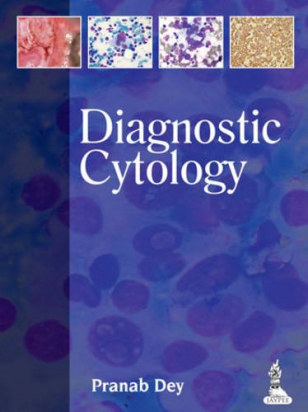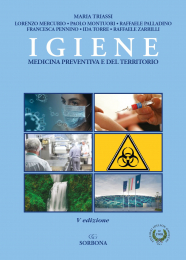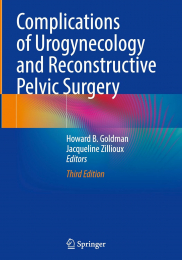Non ci sono recensioni
Cytology is the study of cells; diagnostic cytology involves studying cells to identify diseases. The process is commonly used to detect cancer, but is also helps in the diagnosis of certain infectious diseases and other inflammatory conditions.
This book is a comprehensive guide to diagnostic cytology. Divided into four sections, the book begins with an introduction to general cytology, providing an overview of cells, cell cycles and cell death. The following sections discuss clinical cytology, examining cells in specific areas of the body, and laboratory techniques for studying them.
The final part is dedicated to fine needle aspiration cytology (FNAC), a popular and effective technique for quick tissue diagnosis. This section describes the use of FNAC in all different areas of the body.
Key points
- Comprehensive guide to diagnostic cytology covering general cytology and more specific use of diagnosis techniques in different parts of the body
- In depth coverage of laboratory techniques
- Complete section dedicated to fine needle aspiration cytology
- Includes nearly 1000 clinical photographs, illustrations and tables
Author information
Pranab Dey MBBS MD MIAC FRCPATH
Professor, Department of Cytology, Postgraduate Institute of Medical Education and Research, Chandigarh, India
CONTENTS
Section 1:
General Cytology
chapter
1
Cell
3
Eukaryotic versus Prokaryotic Cells
3
Cell Membrane
3
Cytoplasmic Organelles
9
Nucleus
15
Deoxyribonucleic Acid
19
c
hapter
2
Cell Cycle and Cell Proliferation
24
Cell Cycle
24
Cell Cycle Control and Cancer
29
Cell Proliferation Markers
31
c
hapter
3
Cellular Reaction to Injury and Cell Death
35
Cellular Adaptation
35
Reversible Cell Injury
36
Irreversible Injury
37
Apoptosis or Type I Programmed Cell Death
37
Autophagy
41
Necrosis
43
Inflammation 44
c
hapter
4
Molecular Genetics: Basic Principles and Clinical
a
pplications
46
Chromosome
46
Molecular Cytogenetic Techniques
51
Prognosis of the Patient
54
c
hapter
5
n
eoplasm
57
Benign Neoplasm
57
Biological Characteristics of Malignant Tumor or Cancer
59
Hallmarks of Cancer
59
Cancer Stem Cells
63
Molecular Basis of Cancer
63
Clonal Evolution of Cancer
63
Oncogenes and Cancer
63
Functional Properties of Oncogene
65
Microribonucleic Acid and Cancer
66
Genomic Instability
67
Tumor-Suppressor Genes
69
Preneoplastic Lesions
72
Morphology of Cancer Cell
73
Overall Pattern
73
Cell and Cytoplasm
73
Nucleus
74
xii
diagnosti
C
Cytology
Mitosis
76
Other Nuclear Changes
77
Characterization of Type of Cancer Cell
78
Diagnostic Pitfalls of Malignancy
78
c
hapter
6
t
issue and Cell
o
rganization
81
Epithelial Tissue
81
Connective Tissue
83
Cluster of Differentiation
86
Section 2:
Cl
I
n
IC
al Cytolo
G
y (Exfol
I
at
I
v
E
C
ytolo
G
y)
c
hapter
7
Cervical Smear:
n
ormal Cytology, Bethesda System and
n
on-neoplastic
l
esions
89
Normal Anatomy, Histology and Cytology of Female Genital Tract
89
Normal Cells in Cervical Smear
92
Other Cells
95
Differential Diagnosis
96
Bethesda System of Reporting
96
Endocervical Cells
98
Organisms and Infection
99
Cytological Features of Reparative and Regenerative Changes
102
c
hapter
8
Cervical Carcinogenesis, Preneoplastic and
n
eoplastic Condition
106
Human Papilloma Virus and Cervical Carcinogenesis
106
Cervical Preneoplastic Lesions
108
Atypical Squamous Cells
114
Squamous Cell Carcinoma
115
Adenocarcinoma
117
Endometrial Adenocarcinoma
118
Extrauterine Carcinoma
122
c
hapter
9
Cervical Cancer Screening Program
124
Screening Principle
124
Parameters to Measure the Validity of Screening Tests
124
Types of Modalities for Cervical Cancer Screening
125
Essential Elements for Successful Cervical Cancer Screening
126
Recommendations of Cervical Cancer Screening
127
Problems of Screening in Developing Countries
127
Remedies to Avoid False Negative Cytology
128
c
hapter 10
Effusion Cytology
129
Anatomy and Histology of Body Cavities
129
Effusion
129
Specimen Collection and Processing
130
Benign Cell Population in Effusion
131
Effusion Due to Non-neoplastic Causes
134
Malignant Effusion
137
Ancillary Techniques
148
c
hapter 11
Urine Cytology
152
Anatomy
152
Histology
153
Ultimi prodotti




